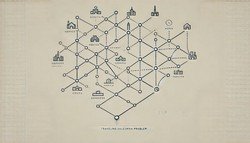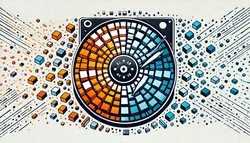PageRank
 (Representational Image | Source: Dall-E)
(Representational Image | Source: Dall-E)
Quick Navigation:
- PageRank Definition
- PageRank Explained Easy
- PageRank Origin
- PageRank Etymology
- PageRank Usage Trends
- PageRank Usage
- PageRank Examples in Context
- PageRank FAQ
- PageRank Related Words
PageRank Definition
PageRank is an algorithm developed by Google founders Larry Page and Sergey Brin to rank web pages in search engine results. It measures the importance of web pages by counting the quantity and quality of links to a page, assuming that more important pages are likely to receive more links. The algorithm assigns a numerical weight to each element of a hyperlinked set of pages to quantify its relative importance.
PageRank Explained Easy
Imagine you have a classroom, and each student votes for who they think is the smartest. The more votes someone gets, especially from well-known students, the smarter they’re considered. PageRank does the same for web pages—it counts the "votes" (links) each page receives and decides which ones are the most important.
PageRank Origin
PageRank was created at Stanford University in 1996 by Larry Page and Sergey Brin. It became the foundation for Google’s search engine, revolutionizing how web pages were ranked.
PageRank Etymology
The term “PageRank” is derived from Larry Page’s name, not just from web pages. It reflects the algorithm’s core principle of ranking based on links.
PageRank Usage Trends
PageRank has evolved since its inception and is still part of Google's ranking system. While other factors like content quality, mobile-friendliness, and page speed have gained importance, PageRank remains a foundational component for understanding the web’s link structure.
PageRank Usage
- Formal/Technical Tagging:
- Search Engine Optimization (SEO)
- Web Ranking Algorithms
- Information Retrieval - Typical Collocations:
- "PageRank score"
- "Google PageRank algorithm"
- "PageRank update"
PageRank Examples in Context
- A high PageRank indicates that a web page is authoritative and trusted by many others.
- Websites that gain backlinks from highly ranked pages improve their own PageRank.
- Early SEO strategies focused heavily on increasing PageRank by acquiring more inbound links.
PageRank FAQ
- What is PageRank?
PageRank is a link analysis algorithm used by Google to rank web pages based on their importance. - Who invented PageRank?
Larry Page and Sergey Brin invented PageRank at Stanford University. - How does PageRank work?
It assigns a numerical weight to each web page based on the quantity and quality of links pointing to it. - Is PageRank still used today?
Yes, though it's one of many factors in Google’s current ranking algorithm. - Can PageRank be manipulated?
In the early days, it was possible to manipulate PageRank with link farms, but Google has since developed sophisticated countermeasures. - Why is PageRank important?
It helps search engines determine the relevance and authority of web pages. - How can I improve my PageRank?
By creating high-quality content and earning backlinks from reputable sites. - Is PageRank visible to users?
Google used to show PageRank in its toolbar, but it is no longer publicly available. - What replaced PageRank?
While not replaced, it was supplemented with other ranking factors like user experience and content relevance. - Does every link impact PageRank?
No, some links (like those with nofollow tags) don’t pass PageRank.
PageRank Related Words
- Categories/Topics:
- Search Engine Optimization (SEO)
- Web Analytics
- Information Retrieval
Did you know?
PageRank was the backbone of Google’s rise to dominance in the search engine world. It enabled Google to provide significantly more accurate and relevant search results compared to its competitors in the late 1990s.
Authors | Arjun Vishnu | @ArjunAndVishnu

PicDictionary.com is an online dictionary in pictures. If you have questions or suggestions, please reach out to us on WhatsApp or Twitter.
I am Vishnu. I like AI, Linux, Single Board Computers, and Cloud Computing. I create the web & video content, and I also write for popular websites.
My younger brother, Arjun handles image & video editing. Together, we run a YouTube Channel that's focused on reviewing gadgets and explaining technology.
















Comments (0)
Comments powered by CComment